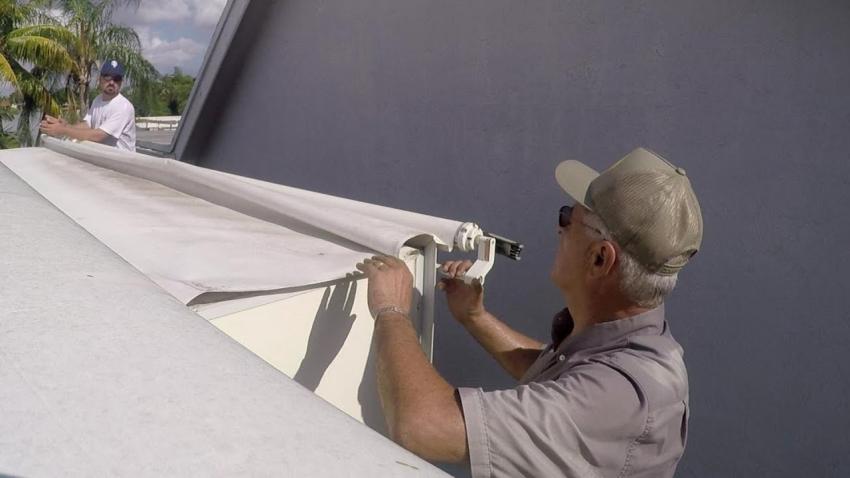
Winter should feel cozy, not stressful. Yet ice dams can change that fast. They form when roof snow melts, then refreezes at the eaves. Leaks and stains start when water backs up under shingles. With Huntington Beach topper installation services, debris stays out, drainage improves, and local pros ensure meltwater flows smoothly off your roof — not into your home. This guide explains how toppers work, why they matter, and what to expect — with clear steps to protect your roof, walls, and peace of mind.
What Exactly Is Huntington Beach Topper Installation Services —and How Does It Stop Ice?
A gutter topper is a guard that sits over your gutters, protecting them from debris. It lets water in but keeps debris out. Less debris means less standing water. Therefore, it lowers the chance of refreezing at the edge. Properly installed toppers also spread flow across the gutter. So, meltwater enters in a smooth sheet instead of a splash. That matters when temperatures drop fast at sunset. With topper installation services, techs set the correct pitch and edges. They also seal end caps and test downspouts. Then, water moves away from your home instead of freezing at the eaves. In short, toppers prevent clogs, reduce overflow, and support steady winter drainage.
How Ice Dams Form—and Why Toppers Help Anyway
Ice dams start with uneven roof temperatures. Warm attic air melts snow high on the roof. Water runs down to the colder eaves, then freezes there. Next, more meltwater pools behind the ice ridge. Finally, it works under shingles and into your attic. Toppers do not replace insulation or ventilation. However, they reduce the fuel that feeds dams: debris and standing water. Clean, covered gutters move meltwater faster, even during brief thaws.
“Fast, clear drainage cuts the time water can freeze at the edge.”
Because toppers limit twigs, leaves, and grit, they also lower the weight in the system. Therefore, hangers strain less in storms. Combined with good attic airflow, toppers become a strong line of defense.
A Simple Winter Plan: Before, During, and After Snow
Before Snow
First, schedule a pre-storm check. Confirm slope, secure hangers, and clear downspouts. Then, make quick fixes.
Key steps to take:
Inspect for loose seams, dips, and minor leaks.
Test the flow using a hose to verify the entry and exit points.
Add downspout extenders to move water farther out.
During Snow
While storms roll in, stay off the ladder. Instead, watch for overflow at corners. If you notice icicles near a downspout, take note of the spot. Because Huntington Beach topper installation services install guards that help shed snow, slush tends to slide off instead of packing tightly, reducing buildup and ice damage.
After Snow
When the thaw begins, check for drip lines and stains. Then, record any trouble areas for a follow-up. A quick visit can adjust pitch, clean outlets, or add a diverter. These small actions keep meltwater draining and stop refreeze along the eaves.
Choosing Materials: What Works Best in Cold Weather
Not all toppers act the same in winter. Some use micro-mesh screens. Others use solid covers with a curved lip. Mesh handles acceptable debris, like roof grit and pine needles. Solid covers shed snow well and reduce visual clutter. Your climate and roof shape guide the choice. The table below highlights common picks and winter traits.
Topper Type Winter Strengths Considerations
Micro-mesh screen Blocks fine grit; resists icing Needs firm support under heavy snow
Solid cover (cap) Sheds snow; smooth water sheet Must set the correct lip angle
Reverse-curve lip Pulls water by surface tension Works best with clean soffit vents
Hybrid screen+cap Balances debris and snow shedding Slightly higher upfront cost
Because Huntington Beach topper installation services tune pitch and lip angle, these systems guide meltwater even during brief refreezes. Therefore, your gutters continue to function when you need them most.
Safety, Savings, and Long-Term Value
You want fewer chores and fewer risks. Toppers help with both. They cut ladder trips and icy clean-outs. They also reduce winter gutter weight and strain. Over time, that lowers repair costs. Plus, steady drainage protects fascia boards, siding, and walkways. That means fewer surprises in spring.
Benefits you can feel right away:
Fewer clogs and less refreezing at the eaves.
Drier soffits and stronger fascia boards.
Cleaner paths and fewer icicle hazards.
Lower chance of leaks under shingles.
Less time on a ladder in bad weather.
When Huntington Beach topper installation services complete the setup, they test every downspout. As a result, the system works as one, not as pieces.
What to Expect During a Professional Visit
A good visit starts with a roofline check. The tech studies valleys, dormers, and wind load. Then, they measure gutter runs and confirm hanger spacing. Next, they clean the channels and outlets. They set the topper type, tie-in corners, and secure the drip edge. Finally, they flush the system and show you the flow.
“See it work with water today, so it protects you tomorrow.”
You also get simple care tips you can follow from the ground up. For example, walk around after storms and note any icy spots. Then, call for a quick adjustment if needed. With beach topper installation services, minor tweaks occur quickly and keep winter water flowing.
Real-World Tips That Support Your Toppers
Toppers work best with a healthy roof system. Therefore, pair them with good attic airflow and steady insulation. Keep bath fans vented outdoors, not into the attic. Seal attic air leaks around lights and hatches. When you block warm air from rising, you reduce melt at the ridge.
Meanwhile, toppers clear the path at the edge. This two-part plan significantly reduces the risk of ice dams. Also, check that downspouts empty well away from your foundation. Install a splash block or downspout extender if needed. The goal is simple: keep water flowing away from your home. Huntington Beach topper installation services can verify the setup to ensure lasting protection.
FAQ
Do toppers alone stop all ice dams?
No. They reduce clogs and standing water. Pair them with insulation and ventilation for the best results. Still, topper installation services make that first step a strong one.
Will snow slide off more with toppers?
Often, yes. Smooth covers shed slush faster. Therefore, water reaches downspouts before it can refreeze.
Are toppers hard to maintain?
Not usually. You may rinse edges in the spring and fall. However, pros can include this in seasonal checks.
Can toppers help in mild winter zones?
Yes. Freeze-thaw cycles still happen. Toppers keep the flow steady during short cold snaps.
Ice dams don't have to rule your winter.
When toppers block debris and guide meltwater, your roof edge stays clear. When airflow and insulation steady roof temperatures, ice dams lose their grip. So, the hard season feels easier. If you want simple, steady protection, start with a careful topper setup and a quick roof system check. And if you would like a local hand to review options and answer questions, Pacific Coast Seamless is ready to help.




